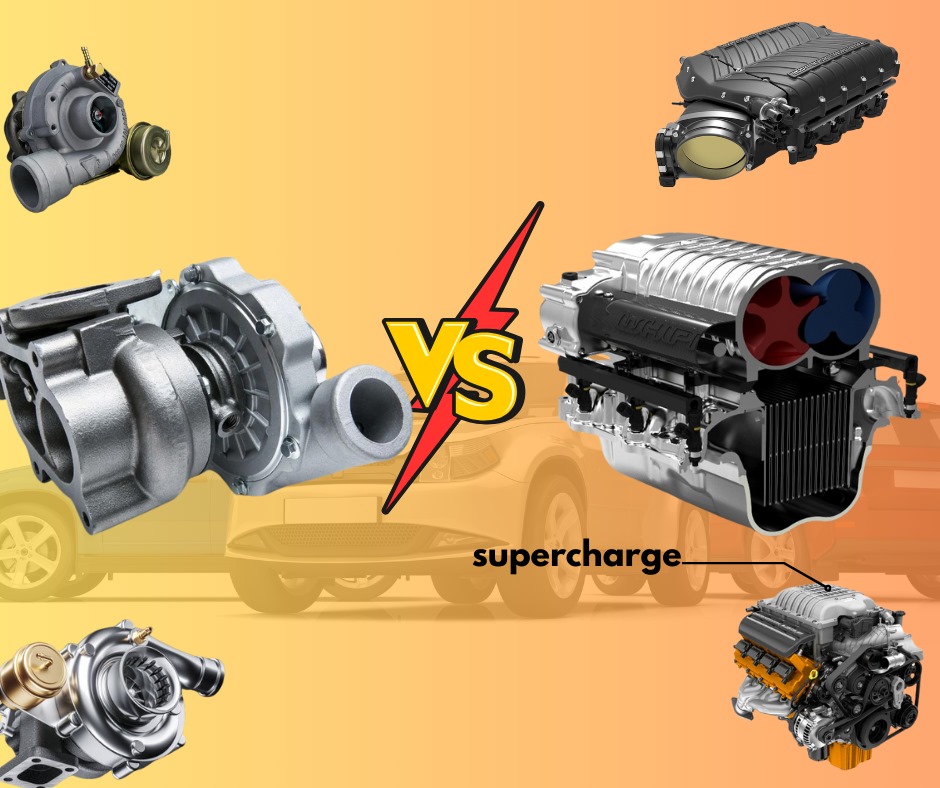HORSEPOWER AND TORQUE: Supercharger vs Turbocharger
25-Jul-2024

Understanding Horsepower and Torque:
Horsepower and torque are two important measurements that define the performance of an engine. Horsepower is a measure of the engine's power output, while torque is a measure of the engine's rotational force.
Horsepower is commonly used to measure the engine's ability to do work over time. It is often associated with top speed and acceleration. The higher the horsepower, the faster the vehicle can go and the quicker it can accelerate.
Torque, on the other hand, is the twisting force produced by the engine. It determines the engine's ability to move heavy loads and provides the initial push needed for acceleration. Higher torque values result in better low-end power and off-the-line acceleration.
Both horsepower and torque are important when comparing superchargers and turbochargers. While superchargers are known for providing instant throttle response and linear power delivery, turbochargers are often praised for their ability to provide high levels of torque at lower RPMs, which can be beneficial for towing and off-road applications.
The Mechanisms of Superchargers and Turbochargers
Both superchargers and turbochargers are forced induction systems that increase the amount of air delivered to the engine, resulting in increased power output.
Superchargers are typically belt-driven and are directly connected to the engine's crankshaft. They use a compressor to pressurize the incoming air before it enters the combustion chamber. This results in an immediate and linear power delivery, as the supercharger is driven directly by the engine.
On the other hand, turbochargers are driven by the engine's exhaust gases. They use a turbine to spin a compressor, which compresses the incoming air before it enters the combustion chamber. Turbochargers rely on the exhaust gases to generate boost pressure, which means there may be a slight delay in power delivery, commonly referred to as turbo lag.
Both superchargers and turbochargers have their advantages and disadvantages. Superchargers provide instant throttle response and can deliver consistent power throughout the RPM range, but they can be less efficient and may create more heat. Turbochargers, on the other hand, can provide higher levels of boost pressure and are generally more fuel efficient, but they may have some turbo lag and can generate more heat under heavy loads.
Impact on Horsepower: Comparing Superchargers and Turbochargers
Both superchargers and turbochargers can significantly increase the horsepower of an engine, but they do so in different ways.
Superchargers provide a direct boost to the engine's power by compressing the incoming air and delivering it to the combustion chamber at a higher pressure. This results in an immediate increase in horsepower and a linear power delivery throughout the RPM range. Superchargers are known for providing instant throttle response and can deliver consistent power even at low engine speeds.
Turbochargers, on the other hand, rely on the engine's exhaust gases to spin a turbine, which then compresses the incoming air. This means that turbochargers may have a slight delay in power delivery, commonly known as turbo lag. However, once the turbocharger is spooled up, it can provide higher levels of boost pressure, resulting in a significant increase in horsepower.
The choice between a supercharger and a turbocharger depends on the specific requirements and preferences of the vehicle owner. Superchargers are often preferred for their instant throttle response and consistent power delivery, while turbochargers are known for their ability to provide higher levels of boost pressure and better fuel efficiency.
Torque Response in Turbocharged vs Supercharged Engines
Torque response is an important factor to consider when comparing turbocharged and supercharged engines.
Superchargers are known for providing instant throttle response and linear power delivery, which results in immediate torque delivery. This means that supercharged engines can provide strong low-end torque, making them well-suited for applications such as towing or off-road driving.
On the other hand, turbocharged engines may have a slight delay in torque delivery, commonly referred to as turbo lag. Turbochargers rely on the engine's exhaust gases to generate boost pressure, which means there may be a brief moment before the turbocharger spools up and delivers maximum torque. However, once the turbocharger is spooled up, it can provide higher levels of torque than a supercharger.
The choice between a turbocharged and a supercharged engine depends on the specific requirements of the vehicle and the desired torque characteristics. If instant throttle response and strong low-end torque are important, a supercharged engine may be preferred. If higher levels of torque and better overall performance are desired, a turbocharged engine may be the better choice.
Fuel efficiency in a turbocharger vs a supercharger
Superchargers are typically less fuel efficient compared to turbochargers. This is because superchargers are driven by the engine's crankshaft, which requires energy from the engine to operate. On the other hand, turbochargers utilize the exhaust gases to spin a turbine, which then compresses the incoming air and increases the engine's power. Since turbochargers use waste energy from the exhaust gases, they are generally more fuel efficient than superchargers.
Additionally, turbochargers can provide better fuel efficiency at lower engine speeds, as they can produce boost pressure even at low RPMs. This can result in improved fuel economy during everyday driving conditions.
However, it's important to note that advancements in supercharger technology have led to the development of more efficient and fuel-friendly superchargers. Some modern superchargers feature variable displacement technology, which allows them to disengage at lower engine speeds, reducing the parasitic power loss and improving fuel efficiency.

 Loading..
Loading..